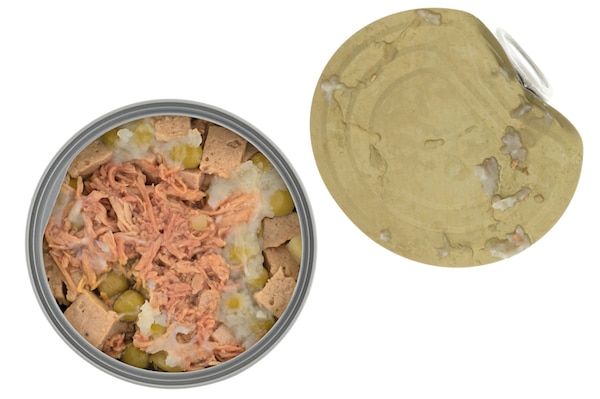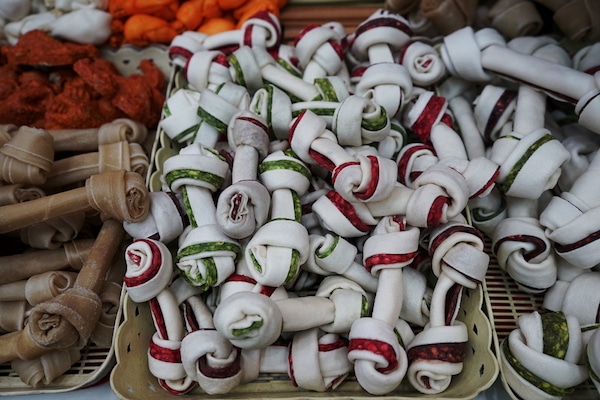First, let’s get one tiny disclaimer out of the way: In today’s industrialized society, it’s nearly impossible to purge every single toxin from our surrounding environment. The actual air we breathe often contains elements that are risky from some perspective, depending upon which expert you ask. So when it comes to environmental toxicity — as it pertains, in this case, to our dogs — we should acknowledge that excessive worry can itself become rather toxic and disabling.
But on the flip side, I’d argue that a balanced level of concern is warranted. After all, chemicals and additives really do seem to originate from everywhere these days. As responsible pet parents, most of us would never willingly expose our faithful furry friends to more risk than absolutely necessary. So it’s probably smart to familiarize ourselves with common, everyday hazards that may stem from surprising sources. Often, making just a few focused adjustments in unexpected places can measurably reduce our dog’s toxic load.
With that in mind, the following checklist highlights a range of these risk factors. Some may cause you to reconsider at least part of your pup’s daily diet and lifestyle routine. That’s precisely the point — because sometimes, what appears to be a “good thing” is more like a good opportunity to re-evaluate what we’ve come to believe. Accordingly, here are some areas to consider:
1. Water
While the World Health Organization (WHO) has shared Guidelines for Drinking Water Quality, contaminant levels can vary by region. Some areas have problematically high levels of hazardous chemicals such as arsenic, fluoride and iron; while in other areas, water may contain alarming concentrations of known endocrine disruptors such as phthalates, bisphenols, pesticides and pharmaceuticals. The British Medical Bulletin published a fairly comprehensive report on the topic, which may be enough to make almost any reader avoid tap water altogether. Using a home filtration system is always a smart safety measure, for you and your pup. Well-known manufacturers such as Brita, PUR, Aquasana and others offer a range of affordable, easy-to-use faucet-mounting and pitcher-style options that help remove a large percentage of health-jeopardizing contaminants.
2. Cans

Pet owners spend millions of dollars annually on commercial canned diets that greatly enhance mealtime convenience. Yet recent research from the University of Missouri has found that even short-term feeding of certain commercially canned edibles may lead to a three-fold increase in systemic concentrations of endocrine-disrupting bisphenol A (BPA). Sometimes, our hectic lifestyles make canned options a virtual necessity. But it’s smart to be aware of the issues surrounding this packaging method. Increasingly, it’s possible to find cans that use protective liners and feature a “BPA Free” logo on the label.
3. Vaccinations
This is a highly debated topic because vaccinations can play a vital role in protecting our pets from a variety of health-threatening ailments. Some are even required by law. Conversely, however, “over-vaccinating” pups could trigger problems. Vaccinations mobilize the immune system, so giving too many may compromise or hyper-stimulate immune response. In his Complete Guide to Natural Health for Dogs and Cats, Dr. Richard Pitcairn also points out that the vaccinations themselves may contain harmful ingredients. Problematic additives and preservatives can include mercury-based Thimerosal, aluminum, even formaldehyde. So it’s worth asking your vet about alternatives (such as the three-year rabies vaccine) that can help increase intervals between updates.
4. Parasite preventives
Flea and tick preventives are proven effective when it comes to killing parasites, but those same active ingredients might pose health problems for certain pups. Common culprits include the growth regulator Methoprene, plus insecticide agents known as organophosphates that are readily absorbed through the skin and can cause delayed neurotoxicity. Of course, fleas and ticks can themselves cause a range of serious health issues and diseases. So in this instance, you truly need to weigh the pros and cons. Herbal collars/powders (like Planet Natural brand) are available, but their long-term effectiveness may be hit-or-miss, depending on your dog’s surroundings.
5. Rawhide

Rawhide by Shutterstock.
The closer you look at the manufacturing journey of a commercial rawhide chew, the more you may want to explore other options for your dog. Rawhide is a by-product of what’s known as the CAFO (concentrated animal feeding operation) — another term for our industrialized farming industry. In his book The Meat You Eat, author Ken Midkiff mentions that CAFO cattle ingest a sustained cocktail of antibiotics, arsenicals and hormones specifically intended to increase production output. And when the animal hide is being prepared for commercial production, removing the hair often involves a highly toxic and corrosive process called sodium sulphide liming. When tested, toxic rawhide residues have included arsenic and formaldehyde. Smarter, healthier chew options include deer antlers, bully sticks, raw carrots, dehydrated sweet potato slices and the absolutely awesome Himalayan Dog Chew.
6. Household products
Of course, most of us keep our pets away from obviously corrosive or irritating cleaning substances, such as chlorine bleach, ammonia or paint stripper. But that pleasantly scented carpet cleaner or room spray may contain 2-butoxyethanol, which could cause blood, liver, kidney, reproductive and/or pulmonary disorders. A compound called trisodium nitrilotriacetate (NTA) is often used as a builder in laundry detergents, and it’s listed as a possible human carcinogen by the International Agency for Research on Cancer. Scuff and graffiti removers frequently contain xylene, a suspected reproductive toxin that can also cause neurological and memory issues with repeated exposure. Even plain old mothballs typically contain either naphthalene or paradichlorobenzene, suspected carcinogens. Once you consider how frequently your pet comes into contact with areas or surfaces impacted by these substances, you may decide to re-think your cleaning routine.
7. Medicine cabinet staples
Naturally, you keep your dog away from human pain relievers, sleep medications and prescriptions. But have you thought about Xylitol? This sugar substitute can be extremely toxic to canines. And while it’s commonly found in gum, you’ll also see it listed on the ingredient labels of many cough drops, cough syrups, cold remedies and over-the-counter digestive preparations.
How have you helped decrease your dog’s toxic load over time? Share your insights and suggestions below.
The post Did You Know That These 7 Items Can Be Toxic to Your Dog? appeared first on Dogster.
No comments:
Post a Comment